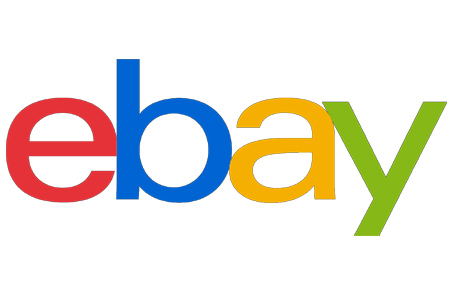
As a fulltime online seller, the best way to keep my cost of goods low is to purchase my inventory in bulk or in quantity whenever possible. In many cases I can purchase thousands of the same item all at once.
Buying items Wholesale or through retail arbitrage at a local store are two great examples of ways I can buy vast quantities of items to resell for very little money. Many times, I am even able to purchase collectible and vintage items in quantity also.
In fact, the majority of what I buy overall is purchased in quantity and in bulk. If you are new to reselling, this may take you some time to figure out, but it is well worth the effort to do so. The lower your overall expenses, the better your bottom line will be.
Most resellers will hopefully run into a quantity of some items either way on a fairly regular basis. I routinely run into duplicates of records, trading cards, toys, board games, video games, dishes, comic books, and etc. Knowing the best way to sell those items then becomes essential.
Selling a wholesale purchase of say 1,500 bicycle racks is not the same as selling 20 copies of the same vintage vinyl record or trade card. Each type of item has its distinct listing needs and methods for getting the highest return on your investment (ROI).
With the bicycle racks, for example, there will be many people wanting them, and some people may actually want more than one (one for each vehicle they own). The same can not be said about a vintage vinyl record. Most buyers would have absolutely no use for more than one copy of the very same record.
A different strategy must be used for each type of item to address their differences. While it would be very beneficial to list the total quantity of bike racks immediately, that option clearly would not be the best route for scarce vinyl records or most vintage and collectibles in general. Bike racks can be found all over the place, but a 50-year-old record would seldom show up.
With a vintage record, it may only show up for sale once a month or maybe even only once a year. If I were to list them all at once with the full quantity of 20, it could destroy the overall value of the record. The best way to keep your ROI up on each one of the 20 records would be to simply only list one for sale at a time.
Once one record sells, I would then add one more record to the listing quantity. This way, only one would still be available at a time, which would keep the selling price up. Listing the full quantity of the same vintage or collectible item up at once will almost always lower the overall value of that item, which would also lower your ROI.
Listing only one record at a time would create a sense of urgency to buy the item before it is gone, since there would only be one available to purchase regardless of how many people actually want it. The record would also be perceived to be more valuable with only one listed at a time.
If there are only a dozen of that record that sell each year, listing all 20 at once would flood the market, which in turn lowers the value. It would be perceived to be fairly common if someone had 20 identical copies of it up at once for sale.
There would be no urgency to purchase it, nor would the value be perceived to be as high with that many all listed at once. The one-at-a-time rule is best used for most vintage and collectible items, while most new or wholesale items would do best listing the actual quantity.
The only real drawback on doing the one-at-a-time approached would be the length of time it could take you to sell all of the quantity of the items you have, since only one would be available at any given time. I always keep that thought in mind when I am out sourcing items to resell.
It usually affects how much I would be willing to pay when I am trying to buy those types of items in quantity. There are also only a limited number of buyers for many items. So even if you do buy a quantity of an item there may only be a couple people a year that would be interested in the item in the first place.
The more desirable the item, the more people will want it. A Harvard football game ticket for example would have a large number of potential buyers, while an 1893 small town high school football ticket may have little to no interest. These are factors that would always need to be considered when buying anything in quantity.
So next time you are contemplating purchasing a large quantity of an item, keep these factors in mind. Your ROI should always be the most important aspect of any purchase, but clearly not your only consideration.




Repetitive and wrong as usual.
Just list them all.
If you list 1 or 20, nothing matters if no one else has them listed.
Only YOU can lower the value if you are the only one selling them.
Besides, a record is a terrible example of a multi-quantity listing.
Should be talking actual wholesale of obtainable replens like shoes, jackets, electronics, etc.
Something you are authorized to sell and obtain at real wholesale prices from an authorized wholesaler.
Some old box of records is not wholesale, multi quantity or replen. Just a one-off buy you happened to get more than one of.
It’s very obvious you do not know vintage or collectibles, nor wholesale. I would also say that you don’t understand what the term multi quantity means. Have 50 of the same item is multi quantity regardless of the item in question. Last I checked having more than one of an item is a quantity.
We are also not talking about some old box of record, but buyer 5,000 or 10,000 records at a time with hundreds of the same record in many cases. This is something that can be done in nearly every city in America as juke box business sell off mass quantity of records.
The reason sellers get top dollar for a record or really any item is supply and demand. If there are very few of something available those items will always sell for more. But if you flood the items onto the market they wont at all appear to be scarce and the price will plummet. This is the most basic business 101 information they teach in high school, and even grade school. The more of something on a market the lower the value will be. So putting up 50 of the same scarce item will kill the value, while just listing one will garner top dollar. This is the way collectibles and vintage have ALWAYS worked. So in reality the seller does control the value of an item by not listing them all at once so that they market doesn’t crash.
A record is a perfect example of this. A record is also a perfect example of a wholesale item contrary to your beliefs as they still make records, and they CAN be purchased wholesale. Our first whole sale purchase was DVDs and LP records. We purchased 1,500 of each item, and they were all the same.
Anything call be bought wholesale.